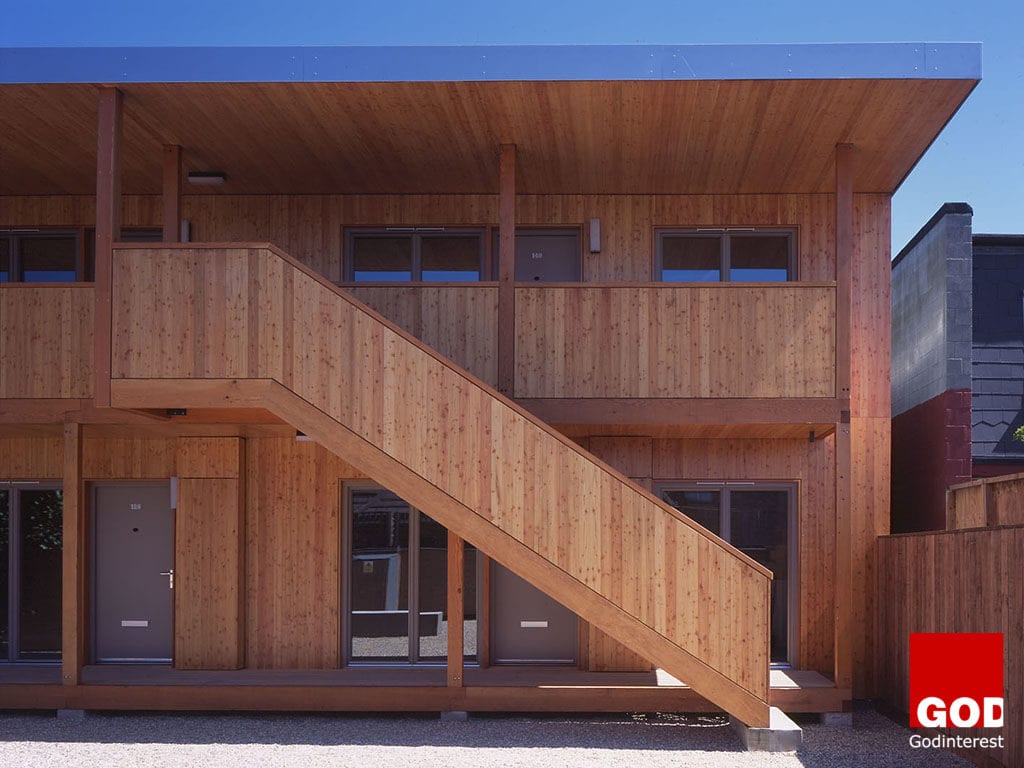Does factory-built housing imply dull arrays of repetitive forms and facades?
If the business argument for prefabricated homes requires large amounts of repetition, the argument for social success relies on the ability of designers and planners to find ways of creating an appropriate sense of place. The articulation of raw building elements to produce good spaces for living and bringing these units together into forms which have amenity and scale is vital. Building facades can also have a major impact on the urban context. With so many different types of cladding now available the designer has the potential to create a unique identity for a building rather than merely mimic the neighbours.
The Broadway Estate comprises just under 500 primarily, Council owned homes in Tilbury, Thurrock, within the Thames Gateway area.
The estate comprises a majority of two storey, flat roofed buildings forming terraces dating from the 1960s. This development of ten one-and two-bed flats on Tilbury’s Broadway Estate, as an assisted selfbuild scheme, focused on nurturing sustainable social capital. The intention behind the design was to develop a building and apartment typology which would appeal to young people and would not attempt to replicate the predominant terrace typology. During construction young people were given the opportunity to work on the site, learning skills alongside professional contractors. The three that completed the programme were allocated reduced rent accommodation in return.

Developer: New Islington
Architect: Sergison Bates Architects
Contractor: Rooff Ltd



